T H E H E R B S
- Alder Bark
 Discription: It is characterized by its 5–10 cm short-stalked rounded leaves 6–12 cm long, becoming wedge-shaped. The wood is light reddish brown and has a coarse texture. Trees mature at about 60 years with long trunk and narrow crown. Distinctive outline in winter. Height 20m or more. Age up to 150 years. The leaves have a distinctive serrated shape and are broad.
Discription: It is characterized by its 5–10 cm short-stalked rounded leaves 6–12 cm long, becoming wedge-shaped. The wood is light reddish brown and has a coarse texture. Trees mature at about 60 years with long trunk and narrow crown. Distinctive outline in winter. Height 20m or more. Age up to 150 years. The leaves have a distinctive serrated shape and are broad.Preperation: Alder bark is stripped off of the tree, washed and either chewed by a cat to apply it to another cat's wounds or chewed by the cat who has a toothache.
Uses: Reduces swelling, prevents infection, eases toothache to reduce pain.
- Borage Leaves, Roots & Seeds
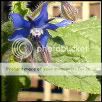 Discription: It grows to a height of 60-100 cm (2-3 feet), and is bristly or hairy all over the stems and leaves; the leaves are alternate, simple, and 5-15 cm (2-6 in) long. The flowers are complete, perfect with five narrow, triangular-pointed petals. Flowers are most often blue in color, although pink flowers are sometime observed. White flowered types are also cultivated.
Discription: It grows to a height of 60-100 cm (2-3 feet), and is bristly or hairy all over the stems and leaves; the leaves are alternate, simple, and 5-15 cm (2-6 in) long. The flowers are complete, perfect with five narrow, triangular-pointed petals. Flowers are most often blue in color, although pink flowers are sometime observed. White flowered types are also cultivated.Preperation: Roots are dug up and washed thoroughly before being chewed up and consumed, however leaves do not need to be washed before consuming, same with the seeds. Borage should never be used dried, only green.
Uses: Helps with broken legs and other serious wounds plus fevers. When consumed by a nursing queen it helps the queen produce more milk.
- Broom Poultice
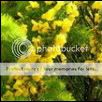 Discription: It typically grows to 1-3 m tall, rarely 4 m, with main stems up to 5 cm thick, rarely 10 cm. It has green shoots with small deciduous trifoliate leaves 5-15 mm long, and in spring and summer is covered in profuse golden yellow flowers 20-30 mm from top to bottom and 15-20 mm wide. Flowering occurs after 50-80 growing degree days. In late summer, its legumes (seed pods) mature black, 2-3 cm long, 8 mm broad and 2-3 mm thick; they burst open, often with an audible crack, spreading seed from the parent plant.
Discription: It typically grows to 1-3 m tall, rarely 4 m, with main stems up to 5 cm thick, rarely 10 cm. It has green shoots with small deciduous trifoliate leaves 5-15 mm long, and in spring and summer is covered in profuse golden yellow flowers 20-30 mm from top to bottom and 15-20 mm wide. Flowering occurs after 50-80 growing degree days. In late summer, its legumes (seed pods) mature black, 2-3 cm long, 8 mm broad and 2-3 mm thick; they burst open, often with an audible crack, spreading seed from the parent plant.Preperation: Chew to a pulp and use that as a poultice. Apply it to open wounds.
Uses: Treats broken bones + open wounds.
- Burdock Root & Leaves
 Discription: Burdock has dark green leaves that can grow up to 18" (45 cm) long. They are generally large, coarse and ovate, with the lower ones being heart-shaped. They are woolly underneath. The leafstalks are generally hollow. The prickly heads of these plants are noted for easily catching on to fur and clothing. Burrs cause local irritation and can possibly cause intestinal hairballs in pets. However, most animals avoid ingesting these plants. The roots (left) are thick and relatively large.
Discription: Burdock has dark green leaves that can grow up to 18" (45 cm) long. They are generally large, coarse and ovate, with the lower ones being heart-shaped. They are woolly underneath. The leafstalks are generally hollow. The prickly heads of these plants are noted for easily catching on to fur and clothing. Burrs cause local irritation and can possibly cause intestinal hairballs in pets. However, most animals avoid ingesting these plants. The roots (left) are thick and relatively large.Preperation: If chewed, should be applied to a NON-INFECTED wound to speed up healing. Apply thoroughly chewed root to a wound; Can be ingested internally.
Uses: Burdock root is mainly used for treating rat bites it can also treat rashes or baldness. When injested internally it treats aching joints and removes poision in the bloodstream.
- Catmint aka Catnip
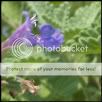 Discription: They have sturdy stems with opposite heart-shaped, green to grayish-green leaves. The flowers are white, blue, pink or lilac and occur in several clusters toward the tip of the stems. The flowers are tubular and spotted with tiny purple dots. The scent of the plant has a stimulating effect on cats.
Discription: They have sturdy stems with opposite heart-shaped, green to grayish-green leaves. The flowers are white, blue, pink or lilac and occur in several clusters toward the tip of the stems. The flowers are tubular and spotted with tiny purple dots. The scent of the plant has a stimulating effect on cats.Preperation: Catmint leaves are harvested and ingested by a sick cat. Cats that need relaxing do not need to ingest the leaves but nearly need to smell them.
Uses: Used for colds, blackcough, whitecough + greencough,
relaxes the cat and helps ease personal and external pains.
- Celandine
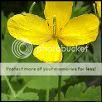 Discription: Greater celandine has an erect habit, and may reach 30 to 120 cm high. The leaves are deeply divided, 30-cm long, and crenate. The sap is bright opaque yellow. The flowers comprise four yellow petals, each about 1 cm long, with two sepals. The flowers appear from May to July. The seeds are small and black, and possess an elaiosome, which attracts ants to disperse the seeds. A double-flowered variety, a naturally occurring mutation, also exists. It is considered an aggressive invasive plant in natural areas (both woods and fields). Control is mainly via pulling or spraying the plant before seed dispersal.
Discription: Greater celandine has an erect habit, and may reach 30 to 120 cm high. The leaves are deeply divided, 30-cm long, and crenate. The sap is bright opaque yellow. The flowers comprise four yellow petals, each about 1 cm long, with two sepals. The flowers appear from May to July. The seeds are small and black, and possess an elaiosome, which attracts ants to disperse the seeds. A double-flowered variety, a naturally occurring mutation, also exists. It is considered an aggressive invasive plant in natural areas (both woods and fields). Control is mainly via pulling or spraying the plant before seed dispersal.Preperation: When chewed to a pulp, Celandine and Eyebright can be dripped into or around the eye.
Uses: Soothes damaged or irritated eyes; can prevent blindness. Also aids blind eyes.
- Chamomile
 Discription: The branched stem is erect and smooth and grows to a height of 15-60 cm. The long and narrow leaves are small. The flowers grown from this plant have large centers with narrow white petals. This property distinguished German Chamomile from Corn Chamomile, which has a receptacle with scales. The flowers have a strong, aromatic smell, and bloom in early to mid summer.
Discription: The branched stem is erect and smooth and grows to a height of 15-60 cm. The long and narrow leaves are small. The flowers grown from this plant have large centers with narrow white petals. This property distinguished German Chamomile from Corn Chamomile, which has a receptacle with scales. The flowers have a strong, aromatic smell, and bloom in early to mid summer.Preperation: Leaves are to be plucked and chewed to be ingested.
Uses: Soothes a cat's heart to calm and helps boost physical strength.
- Juniper Berries
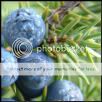 Discription: Juniper berries vary from four to twelve millimetres in diameter; other species are mostly similar in size, though some are larger. Unlike the separated and woody scales of a typical pine cone, those in a juniper berry remain fleshy and merge into a unified covering surrounding the seeds. The berries are green when young, and mature to a purple-black colour over about 18 months in most species.
Discription: Juniper berries vary from four to twelve millimetres in diameter; other species are mostly similar in size, though some are larger. Unlike the separated and woody scales of a typical pine cone, those in a juniper berry remain fleshy and merge into a unified covering surrounding the seeds. The berries are green when young, and mature to a purple-black colour over about 18 months in most species.Preperation: The juniper berries are harvested and given to said cat who has ailments and ingests them.
Uses: Eases aching joints, coughs and bellyaches.
- Chickweed
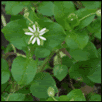 Discription: Flowers are bisexual but sometimes also unisexual and pistillate. Flowers are hypogynous, have 5 sepals that are distinct and green in color and lanceolate to ovate in shape and 2.5-4.5 mm long. Typically with no stipules. The flowers have 5 petals that are white to soft pink in color and are clawed. Plants typically are found as small inconspicuous early spring blooming plants with short life spans.
Discription: Flowers are bisexual but sometimes also unisexual and pistillate. Flowers are hypogynous, have 5 sepals that are distinct and green in color and lanceolate to ovate in shape and 2.5-4.5 mm long. Typically with no stipules. The flowers have 5 petals that are white to soft pink in color and are clawed. Plants typically are found as small inconspicuous early spring blooming plants with short life spans.Preperation: Most likely the leaves are to be ingested (though I'm not too sure, if you are please contact me).
Uses: Treats greencough and minor whitecough. Can be used in blackcough, though it is almost useless.
- Clover Leaf, Steam & Flower
 Discription: They are small annual, and short-lived plants. The leaves are trifoliate (rarely 5- or 7-foliate) heads or dense spikes of small red, purple, white, or yellow flowers; the small, few-seeded pods are enclosed in the calyx.
Discription: They are small annual, and short-lived plants. The leaves are trifoliate (rarely 5- or 7-foliate) heads or dense spikes of small red, purple, white, or yellow flowers; the small, few-seeded pods are enclosed in the calyx.Preperation: Clover leaves and stems are plucked and ingested. When clover flowers are needed, just the right amount is to be ingested or it will not work.
Uses: When the leaves and stems are ingested thay are good stomach healers. When the flowers are ingested, only at the right amount, they may stop internal bleeding.
- Clover Root
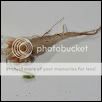 Discription: The root itself is a single mass with a crown on the most top of it. The crown looks like a flower itself with fleshy petals reaching upwards. Other than that it is a bit thick and small.
Discription: The root itself is a single mass with a crown on the most top of it. The crown looks like a flower itself with fleshy petals reaching upwards. Other than that it is a bit thick and small.Preperation: The root is to be dug up and cleaned thoroughly before being mashed up and ingested.
Uses: For sore/achy joints/bones.
- Spiderwebs
 Discription: Spiderwebs come in many different forms and from a variety of spiders (arachnids) the spin them. They're basically a net of very light strands and easy to break, however a hassle if they stick too much and are risky to remove. They're relatively easy to find and get access to. In morning times and over night they become covered in dew, though they still are very much sticky even if the water is clinging to the light strands.
Discription: Spiderwebs come in many different forms and from a variety of spiders (arachnids) the spin them. They're basically a net of very light strands and easy to break, however a hassle if they stick too much and are risky to remove. They're relatively easy to find and get access to. In morning times and over night they become covered in dew, though they still are very much sticky even if the water is clinging to the light strands.Preperation: Spiderwebs are collected by cats taking their paw through it and winding it around them, then taking them over to the patient where they apply the webs gently.
Uses: Stops bleeding and blood flow of a wound.
- Coltsfoot
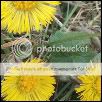 Discription: The flowers, which superficially resemble dandelions, appear in early spring before dandelions appear. The leaves, which resemble a colt's foot in cross section, do not appear usually until after the seeds are set. Thus, the flowers appear on stems with no apparent leaves, and the later appearing leaves then wither and die during the season without seeming to set flowers. The plant is typically between 10 - 30cm in height.
Discription: The flowers, which superficially resemble dandelions, appear in early spring before dandelions appear. The leaves, which resemble a colt's foot in cross section, do not appear usually until after the seeds are set. Thus, the flowers appear on stems with no apparent leaves, and the later appearing leaves then wither and die during the season without seeming to set flowers. The plant is typically between 10 - 30cm in height.Preperation: Not too sure on whether you digest the flowers of leaves, however I'm betting on the flowers, the reason being that the petals appear so late in season. (if you know which and find I am wrong, please do contact me).
Uses: Used to treat kittencough and uneven breathing.
- Comfrey
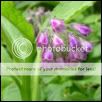 Discription: Comfrey is a herb with a black, turnip-like root and large, hairy broad leaves that bears small bell-shaped white, cream, purple or pink flowers. It is native to Europe, growing in damp, grassy places, and is widespread throughout the British Isles on river banks and ditches. The bell-shaped flowers grow in small clumps much like the image to the left. Like many other bell-shaped flowers the stems that hold them will bend for the bell-shaped flowers to face down-ward.
Discription: Comfrey is a herb with a black, turnip-like root and large, hairy broad leaves that bears small bell-shaped white, cream, purple or pink flowers. It is native to Europe, growing in damp, grassy places, and is widespread throughout the British Isles on river banks and ditches. The bell-shaped flowers grow in small clumps much like the image to the left. Like many other bell-shaped flowers the stems that hold them will bend for the bell-shaped flowers to face down-ward.Preperation: The roots are dug up and washed thoroughly before being chewed into a poultice.
Uses: Comfrey is used to soothe wounds and mend broken bones.
- Daisy Leaves
 Discription: Daisies have flowers that are equiped with with five petals. Leaves can be alternate, opposite, or whorled. They may be simple, but are often deeply edged and narrow. The flowers come in a variety of colors rnaging from yellow, white, pink, blue and purple. The stem is long and stery, holding the flower up with little leaves on it. Its color is green and it stand at a few inches to the most.
Discription: Daisies have flowers that are equiped with with five petals. Leaves can be alternate, opposite, or whorled. They may be simple, but are often deeply edged and narrow. The flowers come in a variety of colors rnaging from yellow, white, pink, blue and purple. The stem is long and stery, holding the flower up with little leaves on it. Its color is green and it stand at a few inches to the most.Preperation: Daisy leaves are stripped from the green stem and the leaves are chewed up by the cat who has the ailments and ingested by them.
Uses: Daisy leaves target join pains within the body.
- Dock
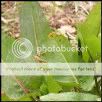 Discription: Docks grow erest, meaning it grow upward. They tend to grow in small to medium sized patches, but can sometimes be found in large patches. They're identified by their large leaves and the way they grow. The veins in the leaves are some what small and thins. The roots are narrow and thin and borrow some what deep int the ground. They can be easy to find by their adversity to grow in many places and by their dstinct leaf shape.
Discription: Docks grow erest, meaning it grow upward. They tend to grow in small to medium sized patches, but can sometimes be found in large patches. They're identified by their large leaves and the way they grow. The veins in the leaves are some what small and thins. The roots are narrow and thin and borrow some what deep int the ground. They can be easy to find by their adversity to grow in many places and by their dstinct leaf shape.Preperation: The leaf can be chewed up and applied to open wounds and scratches. It can also be rubbed on the coat of a cat or rubbed on a nose (when stung.)
Uses: It is use to soothe minor scratches and make a coat slippery. When stung by a stinging nettle on the nose it is used to dull the pain.
- Feverfew
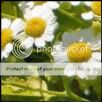 Discription: Feverfew grows into small shrubs or bushes up to a foot tall. Given some time it will grow out to cover a large spot of land. The leaves on the plant are similar to parcly, though the plant is a lighter hue of yellow green than deep green. The flowers on the plant look similar to those of daisies though a bit smaller and with more petals. They are easily found by following a citris scent off of them and idenifying their similar like daisy flowers.
Discription: Feverfew grows into small shrubs or bushes up to a foot tall. Given some time it will grow out to cover a large spot of land. The leaves on the plant are similar to parcly, though the plant is a lighter hue of yellow green than deep green. The flowers on the plant look similar to those of daisies though a bit smaller and with more petals. They are easily found by following a citris scent off of them and idenifying their similar like daisy flowers.Preperation: The leaves are plucked to be eatin by the ailed cat who has the sickness.
Uses: The leaves can be eaten to cool down body temperature, particularly for cats with fever or chills. It is also known to treat head pains like head aches.
- Honey
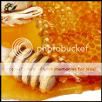 Discription: Honey is a sweet fluid produced by honey bees (and some other species), and derived from the nectar of flowers. Honey gets its sweetness from the monosaccharides fructose and glucose and has approximately the same relative sweetness as granulated sugar. The honey created by the bees in their body is put into honey combs for storage in colder times when there are no flowers.
Discription: Honey is a sweet fluid produced by honey bees (and some other species), and derived from the nectar of flowers. Honey gets its sweetness from the monosaccharides fructose and glucose and has approximately the same relative sweetness as granulated sugar. The honey created by the bees in their body is put into honey combs for storage in colder times when there are no flowers.Preperation: Preperation of the honey is pretty tricky because there's also the attacking of bees intent on keeping te felines away. The bees honey in the honey combs are taken up front and quickly to spare from bee stings. The honey is feed to the ill cat.
Uses: Honey is used to soothe sore or aching throats and has also been known to make cats feel good.
- Horsetail
 Discription: In these plants the leaves are greatly reduced. The leaves of horsetails grow in whorls fused into nodal sheaths. The stems are green and photosynthetic, and distinctive in being hollow, jointed and ridged (with sometimes 3 but usually 6-40 ridges). There may or may not be whorls of branches at the nodes. Horsetail can be found in moist areas like swamps and marsh. As you might imagine they are easy to identify with their unique shape.
Discription: In these plants the leaves are greatly reduced. The leaves of horsetails grow in whorls fused into nodal sheaths. The stems are green and photosynthetic, and distinctive in being hollow, jointed and ridged (with sometimes 3 but usually 6-40 ridges). There may or may not be whorls of branches at the nodes. Horsetail can be found in moist areas like swamps and marsh. As you might imagine they are easy to identify with their unique shape.Preperation: Horsetail is usually chewed up to a poultice and applied extrenally.
Uses: It is used to treat infected wounds.
- Lavender
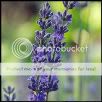 Discription: The flowers grow erect, growing upwards in a bend. The small leaves and long narrow stems are covered in a thin layer of hair. The stems of lavender are mostly without leaves. Lavender can be identified by its purple flowers that grow upward. Upon closer inspection there are small flowers on the flower top itself. They seem to give off a sweet scent and grow widely everywhere due to humans using them as garden plants.
Discription: The flowers grow erect, growing upwards in a bend. The small leaves and long narrow stems are covered in a thin layer of hair. The stems of lavender are mostly without leaves. Lavender can be identified by its purple flowers that grow upward. Upon closer inspection there are small flowers on the flower top itself. They seem to give off a sweet scent and grow widely everywhere due to humans using them as garden plants.Preperation: Lavender is 'harvested' and given to the ill cat to ingest.
Uses: It cures fever, calms your mind and helps you sleep. Good for small cuts.
- Marigold
 Discription: The different species vary in size from 0.05-2.2 m tall. They have pinnate green leaves, and white, golden, orange, yellow, to an almost red floral heads typically (0.1-) to 4-6 cm diameter. The foliage has a musky/pungent scent, though some later varieties have been bred to be scentless. It is said to deter some common insect pests. Their bright colors make them easy to identify and track to collect for medicinal uses.
Discription: The different species vary in size from 0.05-2.2 m tall. They have pinnate green leaves, and white, golden, orange, yellow, to an almost red floral heads typically (0.1-) to 4-6 cm diameter. The foliage has a musky/pungent scent, though some later varieties have been bred to be scentless. It is said to deter some common insect pests. Their bright colors make them easy to identify and track to collect for medicinal uses. Preperation: Once the leaves are plucked the are chewed to a paste and applied extrenally to wounds.
Uses: Helps to prevent an infection and to heal wounds and sores.
- Mousebile
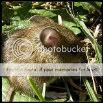 Discription: Bile is a liquid like acid made by the liver of the mouse. It has been known to be put into soaps to remove hard stains.
Discription: Bile is a liquid like acid made by the liver of the mouse. It has been known to be put into soaps to remove hard stains.Preperation: Once a mouse is caught it takes care to open it up delicately and to get to the liver. When the liver is opened moss is collected and used to absorb the liquid for later use. When needed it is applied to a place on a cat's fur coat where ticks or fleas are refusing to leave. Do not get any within your mouth. You must wash your paws in running fresh water once you have finished using the mouse bile moss.
Uses: Used to remove parasites from a cat's coat.
- Nettle leaves
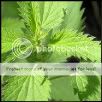 Discription: Stinging nettles grow to 1-2 m tall in the summer and die down to the ground in winter. It has very distinctively yellow, widely spreading roots. The soft green leaves are 3-15 cm long are borne oppositely on an erect wiry green stem. The leaves have a strongly serrated margin, a cordate base and an acuminate tip with a terminal leaf tooth longer than adjacent laterals. It bears small greenish or brownish 4-merous flowers. The leaves and stems are very hairy with non-stinging hairs and also bear many stinging hairs (trichomes), whose tips come off when touched, transforming the hair into a needle that will inject several chemicals: acetylcholine, histamine, 5-HT or serotonin, and possibly formic acid. This mixture of chemical compounds cause a sting or paresthesia from which the species derives its common name, as well as the colloquial names burn nettle, burn weed, burn hazel.
Discription: Stinging nettles grow to 1-2 m tall in the summer and die down to the ground in winter. It has very distinctively yellow, widely spreading roots. The soft green leaves are 3-15 cm long are borne oppositely on an erect wiry green stem. The leaves have a strongly serrated margin, a cordate base and an acuminate tip with a terminal leaf tooth longer than adjacent laterals. It bears small greenish or brownish 4-merous flowers. The leaves and stems are very hairy with non-stinging hairs and also bear many stinging hairs (trichomes), whose tips come off when touched, transforming the hair into a needle that will inject several chemicals: acetylcholine, histamine, 5-HT or serotonin, and possibly formic acid. This mixture of chemical compounds cause a sting or paresthesia from which the species derives its common name, as well as the colloquial names burn nettle, burn weed, burn hazel.Preperation: The plant can be ingested by a cat to irritate the walls of the throat and stomach. It can also be applied to wounds.
Uses: When ingested it is used to expell poisons by having the cat vomitt and when applied to wounds it will keep down swelling.
- Peppermint
 Discription: It grows to 30–90 cm (12–35 in) tall, with smooth stems, square in cross section. The leaves are from 4–9 cm long and 1.5–4 cm cm broad, dark green with reddish veins, and with an. The leaves and stems are usually slightly hairy. The flowers are purple, 0.24–0.31 in long, 0.20 in. in diameter; they are produced in whorls around the stem, forming thick, blunt spikes. Flowering is from mid to late summer. Peppermint gives off a minty scent which is easy to follow if near by.
Discription: It grows to 30–90 cm (12–35 in) tall, with smooth stems, square in cross section. The leaves are from 4–9 cm long and 1.5–4 cm cm broad, dark green with reddish veins, and with an. The leaves and stems are usually slightly hairy. The flowers are purple, 0.24–0.31 in long, 0.20 in. in diameter; they are produced in whorls around the stem, forming thick, blunt spikes. Flowering is from mid to late summer. Peppermint gives off a minty scent which is easy to follow if near by. Preperation: Pepermint's leaves a plucked and ingested by the ill cat.
Uses: It is used to ease stomachaches.
- Poppy Seeds
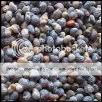 Discription: There isn't much to describe about the seed itself besides the fact that it's small and comes in several different dull shades of black, brown and a creme color. The plant can be found by its very vibrant and bright color of orange or red (most common), however the flowers can vary in color also. Their color coat can vary from pinks, whites, yellows and blues. The plants themselves grow in small patches most often.
Discription: There isn't much to describe about the seed itself besides the fact that it's small and comes in several different dull shades of black, brown and a creme color. The plant can be found by its very vibrant and bright color of orange or red (most common), however the flowers can vary in color also. Their color coat can vary from pinks, whites, yellows and blues. The plants themselves grow in small patches most often.Preperation: The flowers are collected when they are baring seeds and kept for as long as they have remaining seeds held within them. The seed are shaken or pulled out and given to the ailed cat to digest.
Uses: Helps to ease or numb pain, in sadness and in physical pain. Also helps a cat drift off into sleep.
- Snakeroot
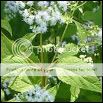 Discription: Snakeroot grows in the shape of rounded shrubs and sometimes are seen as pests. The flowers consists of multiple fluffy, red or pinkish-white clusters. They have multiple, many-branched woody stems. Snakeroot leaves are triangular, serrate and opposite with a foul-smelling, musky scent that also helps to find them. Some snakeroot can also be sticky which can cause a minor situation when the plant decides to stick to your fur.
Discription: Snakeroot grows in the shape of rounded shrubs and sometimes are seen as pests. The flowers consists of multiple fluffy, red or pinkish-white clusters. They have multiple, many-branched woody stems. Snakeroot leaves are triangular, serrate and opposite with a foul-smelling, musky scent that also helps to find them. Some snakeroot can also be sticky which can cause a minor situation when the plant decides to stick to your fur.Preperation: Since traditionally snakeroot causes vomitting then it is to be ingested by the poisened cat. The leaves are plucked carefully and given to the ailed cat who has been poisoned.
Uses: Snakeroot is used to counter poison.
- Tansy
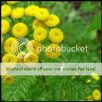 Discription: Tansy is a flowering plant with finely divided leaves and yellow, buttonlike flowers. It has a stout, somewhat reddish, erect stem, usually smooth, 50-150 cm tall, and branching near the top. The leaf holds a somewhat fernlike appearance. The roundish, flat-topped, buttonlike, yellow flower heads are produced in clusters from mid to late summer. The scent is similar to that of camphor with hints of rosemary.
Discription: Tansy is a flowering plant with finely divided leaves and yellow, buttonlike flowers. It has a stout, somewhat reddish, erect stem, usually smooth, 50-150 cm tall, and branching near the top. The leaf holds a somewhat fernlike appearance. The roundish, flat-topped, buttonlike, yellow flower heads are produced in clusters from mid to late summer. The scent is similar to that of camphor with hints of rosemary.Preperation: In most cases the leaves are ingested and given to an ill cat to ingest though at other times it is given to a perfectly healthy cat for long trips.
Uses: Treats coughs, colds, etc. Also treats wounds and keeps hunger at bay.
- Thyme
 Discription: Thyme grows in a lively vibrant green at a very short height. Thyme grows in small group bundles, the plant only growing up to a few inches to a foot tall. It does not produce any flowers and is made up of many stems. The stems grow to their wn height baring small leaves that grow upward from larger to smaller in size. Due to its drought resistent it can last through many bad weather occurences beside bareleaf.
Discription: Thyme grows in a lively vibrant green at a very short height. Thyme grows in small group bundles, the plant only growing up to a few inches to a foot tall. It does not produce any flowers and is made up of many stems. The stems grow to their wn height baring small leaves that grow upward from larger to smaller in size. Due to its drought resistent it can last through many bad weather occurences beside bareleaf.Preperation: The steams are plucked and the leaves are shredded off of the stem itself. The leaves of thyme are then fed to the ill cat. The leaves have a strong taste as it is often used for culinary purposes.
Uses: Calms an agitated or anxious cat.
- Watermint
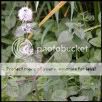 Discription: It is a plant growing to 90 cm tall. The stems are square, green or purple, and variably hairy to almost hairless. The leaves are ovate, 2–6 cm long and 1–4 cm broad, green (sometimes purplish), toothed, and vary from hairy to nearly hairless. The flowers are tiny, densely crowded, purple, pinkish to lilac in colour; flowering is from mid to late summer. Water Mint is pollinated by insects, and also spreads by underground, like other species of mint. All parts of the plant have a distinctly minty smell.
Discription: It is a plant growing to 90 cm tall. The stems are square, green or purple, and variably hairy to almost hairless. The leaves are ovate, 2–6 cm long and 1–4 cm broad, green (sometimes purplish), toothed, and vary from hairy to nearly hairless. The flowers are tiny, densely crowded, purple, pinkish to lilac in colour; flowering is from mid to late summer. Water Mint is pollinated by insects, and also spreads by underground, like other species of mint. All parts of the plant have a distinctly minty smell.Preperation: Like regular wild mint, watermint is ingested by the leaves in some cases, though is also chewed to a pulp and applied to minor open wounds for other purposes.
Uses: Calming soothing healer. Good for stinging cuts, but is ineffective on large ones, plus used to treat bellyache
- Wild Garlic
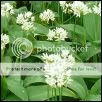 Discription: Ramsons grow in deciduous woodlands with moist soils, were they are most commonly found in slightly acid soils. They flower before most trees leaf out in the spring; during flowering the plants fill the air with their characteristic garlic-like scent. The stem is triangular in shape and the leaves are similar to those of the Lily of the Valley. Unlike the related crow garlic and field garlic, the flower-head contains no bulbils, only flowers. The patches that wild garlic grow in can stretch far and wide if the weather conditions are right.
Discription: Ramsons grow in deciduous woodlands with moist soils, were they are most commonly found in slightly acid soils. They flower before most trees leaf out in the spring; during flowering the plants fill the air with their characteristic garlic-like scent. The stem is triangular in shape and the leaves are similar to those of the Lily of the Valley. Unlike the related crow garlic and field garlic, the flower-head contains no bulbils, only flowers. The patches that wild garlic grow in can stretch far and wide if the weather conditions are right.Preperation: Wild garlic is to be used externally and rolled in when one has open wounds externally or wants to cover a scent, as the garlic has a tendency to cover many other smells.
Uses: Wild garlic is rolled into prevent infections.
- Yarrow
 Discription: Common Yarrow is an erect plant that produces one to several stems. Leaves are evenly distributed along the stem, with the leaves near the middle and bottom of the stem being the largest. The leaves have varying degrees of hairiness. The leaves are 5-20 cm long, almost feathery, and arranged spirally on the stems. Yarrow contains ray and disk flowers which are white to pink. There are generally 3 to 8 ray flowers that are round.
Discription: Common Yarrow is an erect plant that produces one to several stems. Leaves are evenly distributed along the stem, with the leaves near the middle and bottom of the stem being the largest. The leaves have varying degrees of hairiness. The leaves are 5-20 cm long, almost feathery, and arranged spirally on the stems. Yarrow contains ray and disk flowers which are white to pink. There are generally 3 to 8 ray flowers that are round.Preperation: The leaves or stems (either is fine) are given to a poisoned cat to ingest so that is irritates the insides of the cat to cause them to vomit.
Uses: When ingested by a cat it will cause them to expell poison by vomitting. It is also good for infections.
- Yew
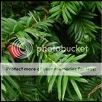 Discription: It is a small- to medium-sized evergreen tree, growing 33–66 ft tall, with a trunk up to 2 metres in diameter. The bark is thin, scaly brown, coming off in small flakes aligned with the stem. The leaves are flat, dark green, 1–4 centimetres long and narrow, arranged spirally on the stem, but with the leaf bases twisted to align the leaves in two flat rows either side of the stem, except on erect leading shoots where the spiral arrangement is more obvious.
Discription: It is a small- to medium-sized evergreen tree, growing 33–66 ft tall, with a trunk up to 2 metres in diameter. The bark is thin, scaly brown, coming off in small flakes aligned with the stem. The leaves are flat, dark green, 1–4 centimetres long and narrow, arranged spirally on the stem, but with the leaf bases twisted to align the leaves in two flat rows either side of the stem, except on erect leading shoots where the spiral arrangement is more obvious.Preperation: The leaves are ingested by a cat who has eaten a deathberry from the yew. The cat will then vomit up what they have eaten.
Uses: Makes a cat throw-up. Often used when a cat swallows a deathberry.
- Chervil Root
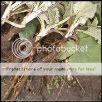 Discription: The plants grow to 40-70cm, with tripinnate leaves that may be curly. The small white flowers form small. The fruit is about 1cm long, oblong-ovoid with a slender, ridged beak. They grow as round shrub bushes with a deep lively green to them. Their appearance looks similar to that of a fern's in leaf wise. Chervil is thickly crowded with leaves andhas very few flowers when it does bloom. The roots look like any other root and can really only be identified by the plant above the ground.
Discription: The plants grow to 40-70cm, with tripinnate leaves that may be curly. The small white flowers form small. The fruit is about 1cm long, oblong-ovoid with a slender, ridged beak. They grow as round shrub bushes with a deep lively green to them. Their appearance looks similar to that of a fern's in leaf wise. Chervil is thickly crowded with leaves andhas very few flowers when it does bloom. The roots look like any other root and can really only be identified by the plant above the ground.Preperation: Once the chervil is found a medicine cat will dig up undernath the plant for the roots. The roots will be be washed thoroughly and ingested.
Uses: Helps with a belly ache and infections.
- Ragwort
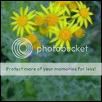 Discription: Ragwort is part of the daisy family. The flower heads are normally rayed, completely yellow, and the heads are borne in branched clusters. The serrated leaves of ragwort grow upward erect on the hollow-like stem. The flowers that grow on them take the appearance similar to that of daisies (as they are related) yet they have narrower flower petals. Most of them are seen as pests and they can grow very diverse like weeds, whcih makes it easy for them to be found in many places.
Discription: Ragwort is part of the daisy family. The flower heads are normally rayed, completely yellow, and the heads are borne in branched clusters. The serrated leaves of ragwort grow upward erect on the hollow-like stem. The flowers that grow on them take the appearance similar to that of daisies (as they are related) yet they have narrower flower petals. Most of them are seen as pests and they can grow very diverse like weeds, whcih makes it easy for them to be found in many places.Preperation: The leaves are stripped bare from the stem of the plant and given to the sore cat to ingest.
Uses: Ragwort is used to ease the pain of aching joints.
- Deathberries
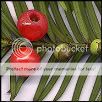 Discription: The seed cones are highly modified, each cone containing a single seed 4–7 millimetres long partly surrounded by a modified scale which develops into a soft, bright red berry-like structure called an aril, 8–15 millimetres (0.31–0.59 in) long and wide and open at the end. The arils are mature 6-9 months after pollination, and with the seed contained are eaten by thrushes, waxwings and other birds, which disperse the hard seeds undamaged in their droppings; maturation of the arils is spread over 2-3 months, increasing the chances of successful seed dispersal. The seed itself is extremely poisonous and bitter.
Discription: The seed cones are highly modified, each cone containing a single seed 4–7 millimetres long partly surrounded by a modified scale which develops into a soft, bright red berry-like structure called an aril, 8–15 millimetres (0.31–0.59 in) long and wide and open at the end. The arils are mature 6-9 months after pollination, and with the seed contained are eaten by thrushes, waxwings and other birds, which disperse the hard seeds undamaged in their droppings; maturation of the arils is spread over 2-3 months, increasing the chances of successful seed dispersal. The seed itself is extremely poisonous and bitter.Preperation: When needed, the berries are harvested with much care so as not to eat them. Usually the twigs that hold the berries are snapped off and carried to camp (with the berries hanging on), although they are fatal they are often kept on hand for special cases to be ingested.
Uses: Ancient pain killer for our ancestors. Now it will kill the strongest warrior and of no medicinal value; bright scarlet berries that can kill a cat if they are not expelled quickly enough. Sometimes they are used to put a pained warrior out of his or her misery.
- Nightshade
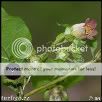 Discription: Nightshade often grows as a subshrub, from a fleshy rootstock. Plants grow to 1.5 m (5 ft) tall with 18 cm (7 in) long ovate leaves. The bell-shaped flowers are dull purple with green tinges and faintly scented. The fruits are berries, which are green ripening to a shiny black, and approximately 1 cm in diameter. The berries are sweet and are consumed by animals that disperse the seeds in their droppings, even though the seeds contain toxic alkaloids.
Discription: Nightshade often grows as a subshrub, from a fleshy rootstock. Plants grow to 1.5 m (5 ft) tall with 18 cm (7 in) long ovate leaves. The bell-shaped flowers are dull purple with green tinges and faintly scented. The fruits are berries, which are green ripening to a shiny black, and approximately 1 cm in diameter. The berries are sweet and are consumed by animals that disperse the seeds in their droppings, even though the seeds contain toxic alkaloids.Preperation: Pretty much anything eaten of this could cause a cat illness and most likely death.
Uses: Nightshade has no medicinal value; much the same as deathberries/yew.
Descriptions were taken from Wikipedia.com



